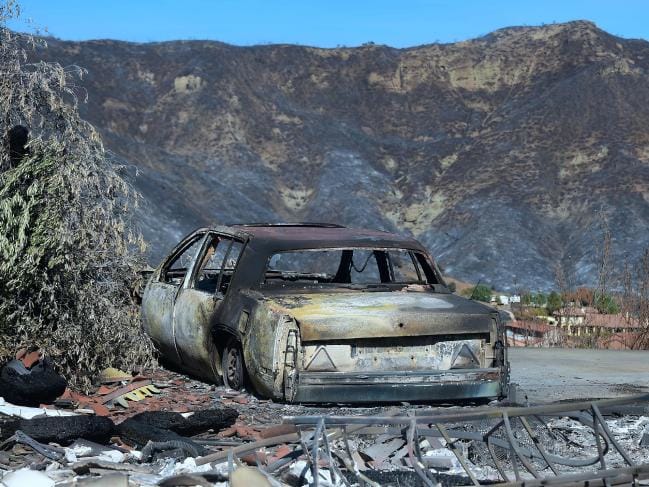To the outside world, the fire that blasted through Paradise, California – the most populous state in one of the world’s wealthiest nations – seems inexplicable.
The U.S. has the most powerful fire agencies on Earth, and California has the five largest fire departments in the U.S. How could a fire rush through a modern town of 27,000 people, destroy nearly 20,000 structures, and kill 88 people (and counting)? The fire appeared like an alien visitation.
If so, it’s the third in 12 months. The fact is, California is built to burn. It has all the ingredients for a natural regimen of fire: regular rhythms of wetting and drying, periodic drought, implacable off-shore winds, and ample ignition. If all its 39 million humans vanished, the state would still burn freely and at times explosively, and some fires would not stop until they hit the Pacific Ocean. The Camp fire is noteworthy only by its savage cunning in flowing through Paradise, as an avalanche of flame and embers.
Native Californians learned to live with that reality. Modern Americans have not. For over a century the same scenario keeps repeating: a big fire, communities threatened, postburn reviews and commissions, followed by a buildup of firefighting resources before the next explosion. More engines, more aircraft, more crews, more studies. Then the next fire bust overruns the landscape and anything in its path.
The cycle replays, each time ratcheting up the damages and costs. Fire suppression, in truth, becomes part of the problem, allowing combustible vegetation to stockpile and shielding residents, often newcomers, from appreciating the magnitude of the threat fire poses.
Changing Fire Features
After World War II the character of the fires shifted. California’s rural fire issues mutated, unexpectedly and shockingly, into an urban fire problem. Californians pushed suburbs outward, scattered exurban enclaves into the countryside, and reoccupied old towns with urbanites, often retirees.
The year 1961 makes a useful marker. On 23 July, the Harlow fire blasted through 43,000 acres in Mariposa County in the foothills of the Sierra Nevada, destroyed 90 structures, threatened several towns, and killed two people. The fire raced through 18,800 acres in just two hours. Four months later, a wildfire driven by Santa Ana winds crashed through the exclusive Bel Air-Brentwood suburb in Los Angeles, burning 16,900 acres and 484 homes.
The Harlow fire was a rural fire of a sort long known to California. The Bel Air-Brentwood fire, however, was an urban conflagration, a novelty in a nation that thought it had banished big urban fires. The country was losing its middle, rural landscapes, polarizing into either the wild or the urban. Fire followed that lead and found ways to intrude in places where they mingled. Some 57 years later that fusion incinerated Paradise.
In 1974 the mutant fire received a name and became the poster child, Patient One, for the “wildland-urban interface (WUI):” the zone of transition between unoccupied land and human development. In 1986, the WUI became the subject for a national campaign led by the U.S. Forest Service and the National Fire Protection Association. The fires kept coming.
In 1991 Oakland, California burned when a fire surged out of open land into the city, then burned 795 structures in the first hour before consuming 3,280 structures and killing 25 people.
The fires continued. What had been labeled “campaign” fires now morphed into “fire sieges.” In October 2017, the Tubbs fire burned into Santa Rosa. In August 2018, the Carr fire burned into Redding. In November 2018, the Camp fire burned over Paradise.
Spreading over the Globe
By now, the phenomenon had long ceased to be a California oddity. It spread throughout the American West, and in the 21st-century into the southeastern U.S.
In fact, it had gone global. Europe experienced it along the Mediterranean rim, most spectacularly in Portugal and Greece. South Africa had fires burn to the suburbs of Cape Town. Canadian fires have threatened Kelowna and burned into Slave Lake. Australia suffered repeatedly, and on Black Saturday, 7 February 2009, bushfires killed 172 people north of Melbourne. Russia endured village-incinerating fires and saw Moscow smoked in. California may have given a name and a face to such fires, but they had long left their birth site to wander the world on their own.
What has happened in Paradise has happened in California many times before. What changed was that an entire town, not fringe communities, stood in the path of the flames and ember storm.
Cycle will Continue
The old cycle will continue and will continue to assume new avatars until the fundamentals change. Until we harden houses and design towns for fires that are all but inevitable. Until we dampen the fuels that surround such sites. Until we redesign our energy grid so that power lines do not cast sparks under the high winds that propel big burns. Until we arrange adequate means of entry and egress. Until we begin to wind back the sources of climate change. Until we end the magical thinking that assumes more air tankers, engines, and crews can protect us.
California is built to burn. We either live with fire or we die by it.



